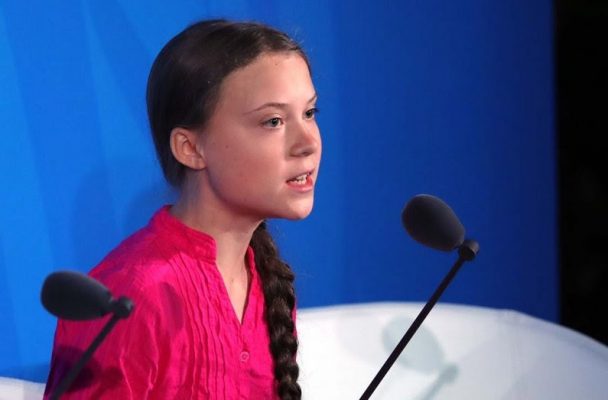What should be done about climate change?

Greta Thunburg has become a prominent symbol in the environmentalist movement. Image from Hollywood Reporter
By Jordan Rankin
Staff Writer
Earlier this year, Swedish 16-year-old Greta Thunberg made international headlines with her strike from attending school to confront the world’s major leaders for their failure to address climate and environmental issues.
“The discussion here [in the United States] hasn’t come as far as the discussion where I’m from. Sometimes here it’s like debating whether the climate crisis is occurring or not. And some people don’t accept or understand science…that is being seen as a bit of a point of view rather than facts,” said Thunberg.
She makes an excellent point that few Americans have realized. In every other developed country in the world, the existence of climate change is considered to be fact, not a point of view.
Since 1999, the United States has passed few new national climate change policies, despite the carbon dioxide levels in the atmosphere rising from 364 to 415 parts per million, according to observations from the Mauna Loa Observatory in Hawaii.
American critics of Thunberg cite her lack of “a sound education” and poor parenting as the reason for her extremism. Even President Donald Trump has asserted that climate change is a hoax.
Climate crisis expert Jean-Daniel Collomb conducted a study devoted to understanding the reasons why some Americans don’t believe that climate change is real, and found a few attitudes to be the main causes. First, conservatives favor small government and oppose government regulation.
Because of this, they are averse to accepting environmentalist legislation that would impose such restrictions. Second, many defend the American way of life, marked by rapid consumption and the pursuit of material prosperity. President Trump additionally credits oil and gas giants with the blocking of climate action due to short-term economic interests.
These prioritizations have manifested in our government, as evidenced by the failure of numerous proposed climate bills and President Trump’s decision to back out of the 2015 Paris Agreement. The consequences are not only astounding but well-documented, with studies showing that premature deaths caused by toxic air pollution and massive flooding are costing the U.S. a substantial amount of money in medical bills and building repairs.
The proposed Green New Deal recognizes that “a changing climate is causing sea levels to rise and an increase in wildfires, severe storms, droughts, and other extreme weather events that threaten human life,” but the bill has yet to reach any sort of agreement, let alone implementation. Under the Trump Administration, several standing climate policies have been reversed, namely those that focus on emissions reduction.
This is a problem for the youth. Older generations have created the issue, and it is in the interest of the upcoming generations to reverse it, as they are the ones who will suffer the consequences. Until the government decides to take a strong stance on the matter, there is insufficient foreseeable action on behalf of the United States to combat climate change.
The beginning of the solution rests in the attitude of the people, both voters and legislators, to recognize the severity of the climate crisis, and to commence the long process of reversing it.